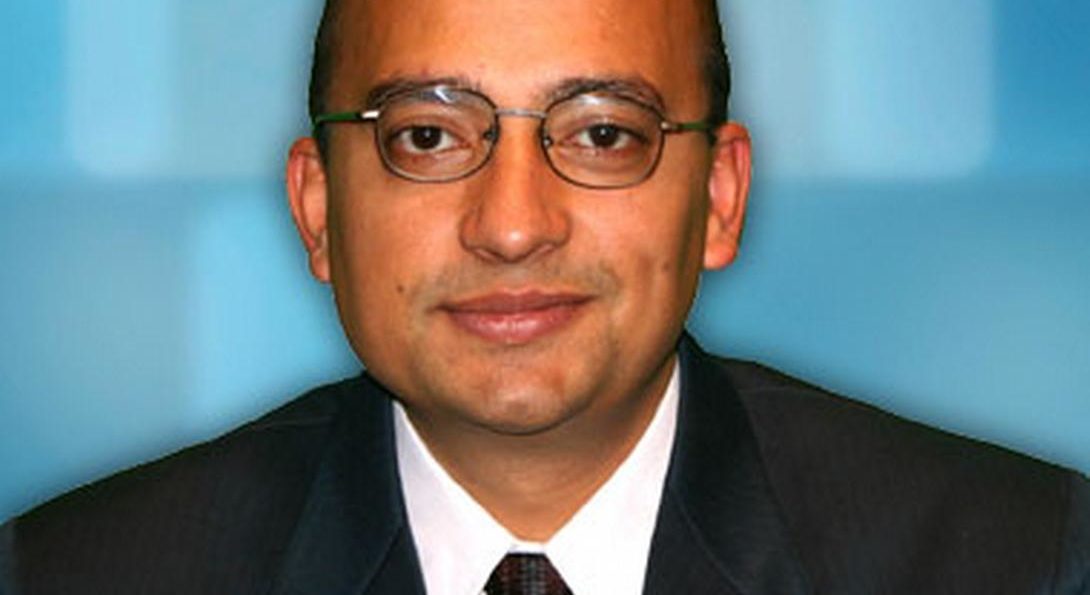Professor Mazumder awarded grants for power semiconductor device control and cyber physical energy systems research

In 2017, ECE Professor Sudip K. Mazumder traveled the globe to deliver keynote lectures at the IEEE Southern Power Electronics Conference in Chile and the IEEE Power Electronics for Distributed Generation Systems Conference in Brazil. He also delivered IEEE PELS distinguished lectures in India, Chile, and the United States. The prolific professor also was the co-recipient of his 10th U.S. patent entitled Insulated-gate photoconductive semiconductor switch.
Mazumder, who is the Director of UIC’s Laboratory for Energy and Switching-Electronics Systems, was awarded two new research grants, which means he doesn’t plan to slow down anytime soon.
The first grant is for research in the power electronics area and the research is titled Control of Next Generation Naval Wide-Bandgap Power-Electronic Systems using Predictive Switching Sequences and Switching Transitions.
“In this project, a radically-new multi-scale control for wide-bandgap (WBG) power semiconductor device based converter will be pursued and its efficacy validated in real-time operation,” said Mazumder. “What is unique about this multi-scale control is its ability to achieve performance optimality for the WBG-converter at the device level.”
“The synthesis of the overall control mechanism, realized under large-signal stability bound, controls the time evolution of the switching states of the WBG-Converter, controls the transitional switching dynamics of the WBG power semiconductor device, and co-synthesizes the switching-sequence-based control and switching-transition control mechanisms under one unified control framework to achieve multi-scale optimality for the WBG-Converter encompassing energy-conversion efficiency, dv/dt and di/dt device stress, and electromagnetic noise.”
The funding for this project was made possible by a three-year grant of approximately $400,000 from the Office of Navy Research.
Researching Smart Railway Grid
Another project he is working on is called the CPS: Breakthrough: Collaborative Research: Transactive Control of Smart Railway Grid. This project goal is to create a smart cyber-physical system (CPS) approach for improving the electric rail infrastructure in the United States.
He is researching electric trains and how they consume energy from the electric grid or railway grid. The trains have a time table or schedule, and the operators know the distance between stations. They can calculate the timing and this is how the railway operators, based on these average calculations, negotiate with the electrical grid how much power will be needed, and they lock in a price.
“What is interesting here and what we demonstrated is that for the same average velocity based on which they calculate the timing – the average distance by average velocity – you can meet the end to end timing using different velocity profiles,” he said. “One can increase the speed and decrease the speed, but maintain the same average. The beauty of that is that now when you control the speed – the speed is directly related to how much power you need. The faster you travel, the more energy you need. Slower you travel, the less energy you need. The idea is to have the same average velocity based on which they have done the timetable, but create a velocity profile of the train which will require less energy consumption.”
This is one of the main ideas of his research. When the train is traveling, there will be times when the price of electricity is lower and the train can speed up, because even if you increase the power, the cost will be lower. Alternatively, the train can be slowed down during peak times when the cost of electricity is higher. By doing so, the railway operators are reducing the energy consumption.
“The grid operator doesn’t have to turn on another gas turbine or generator, which would cost them a lot. Reducing energy consumption is saving money for both parties – the railway and the electric provider,” said Mazumder. “That is the core idea and it’s a new concept called transactive control. That means the train is running based on a transaction. It’s a transaction between the railway operator and the grid operator. In such a way that you can have energy savings and both the parties basically win.”
For this project, Mazumder is collaborating with engineers in the Southeastern Pennsylvania Transport Authority, where significant modernization efforts are underway to improve its electric-train system. The team also will validate the technologies through a strong international collaboration.
Mazumder is the lead and sole PI at UIC, and collaborating with a co-PI at MIT. The funding for this project was made possible by a two-year grant of $500,000 – with $300,000 awarded to UIC – from the National Science Foundation.